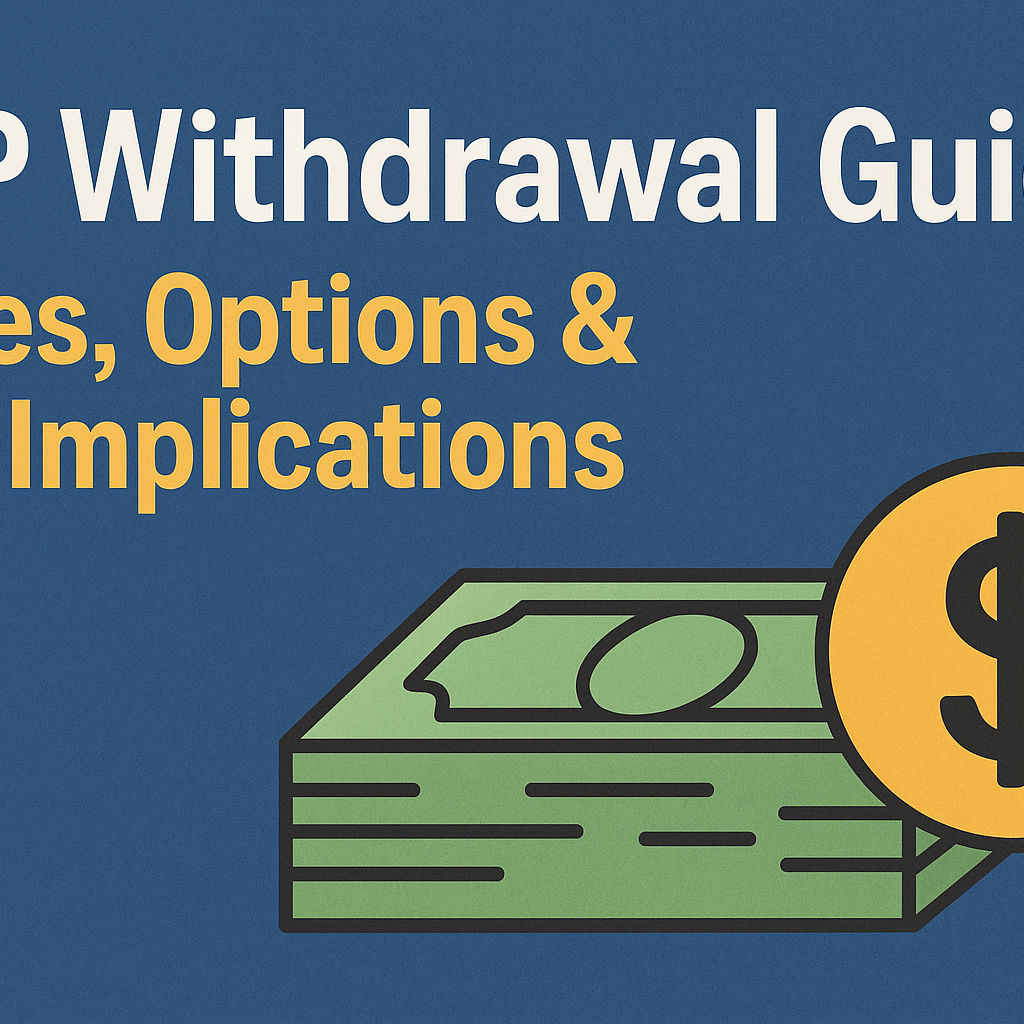
TSP Withdrawal Guide: Rules, Options & Tax Implications
The Thrift Savings Plan (TSP) is a retirement savings plan designed for federal employees and members of the uniformed services. While contributing to your TSP is important, knowing how and when to withdraw your funds is equally crucial to ensure long-term financial security.
Key Takeaways
-
TSP offers multiple withdrawal options during service (limited) and after separation.
-
You can withdraw through lump sums, installments, annuities, or combinations.
-
Tax implications vary depending on Traditional vs Roth TSP.
-
Careful planning is essential to maximize retirement benefits.
Types
1. In-Service Withdrawals
These are withdrawals you can make while still working:
-
Age-Based Withdrawals – Allowed if you are 59½ or older.
-
Financial Hardship Withdrawals – For urgent and significant financial needs.
Note: Hardship withdrawals permanently reduce your retirement savings and may trigger taxes/penalties.
2. Post-Separation Withdrawals
Once you retire or leave federal service, you can choose from multiple withdrawal methods:
-
Installment Payments → Set up regular payments (monthly, quarterly, or annually).
-
Partial Withdrawals → Take out part of your savings while leaving the rest invested.
-
Full Withdrawals → Withdraw everything at once through:
-
A lump sum,
-
An annuity purchase, or
-
A combination of both.
-
3. Required Minimum Distributions (RMDs)
Federal law requires you to begin withdrawals by April 1 of the year after you turn 73. This ensures your account is used during retirement rather than kept indefinitely.
Tax Rules for TSP Withdrawals
-
Traditional TSP → Withdrawals are taxed as ordinary income.
-
Roth TSP → Withdrawals are tax-free if you are 59½ or older and the account has been open for at least 5 years.
-
Early Withdrawals (before 59½) → May face a 10% early withdrawal penalty, unless exceptions apply.
Things to Consider Before Withdrawing
-
Retirement Income Needs → Will you have enough income for living expenses?
-
Longevity → Stretching withdrawals can help your money last longer.
-
Tax Strategy → Plan withdrawals in a way that minimizes taxes.
-
Other Income Sources → Coordinate TSP withdrawals with Social Security, pensions, and IRAs.
Related Post
Related dipin-mehndiratta-2962 Posts

TSP Withdrawal Calculator : TSP Annuity and Monthly Payments
One of the options you have, when you use the TSP withdrawal calculator available through…
Read More
TSP Withdrawal Deadlines to Avoid
You may know about the age threshold (72) that the IRS imposes as a requirement…
Read More
Withdrawal Guide for TSP Beneficiary Participant Account
Assuming an account balance of $200 or more, the spouse beneficiary….
Read More

